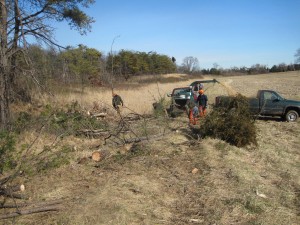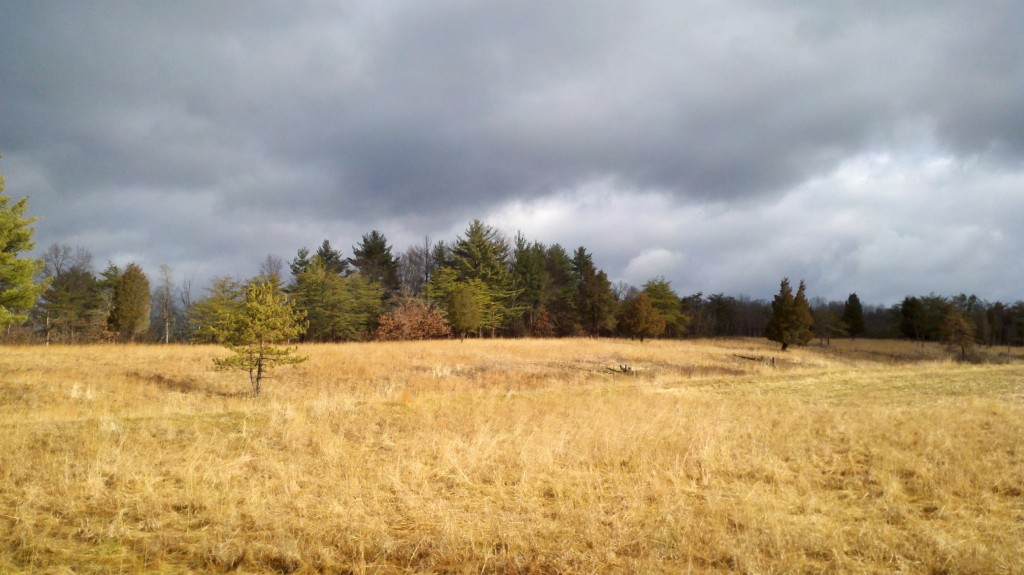Restoring Serpentine Barrens: Willisbrook Preserve
By Ariel Senko, Communications Intern

Clearing woody plants from the serpentine barrens at Willisbrook Preserve.
Our Land Stewardship staff recently began to clear shrubs and small trees from the Sugartown Barrens at our Willisbrook Preserve in Willistown Township, Chester County. This is part of a two-year project to restore about 42 acres of the barrens, for which we received a grant from the USDA’s Wildlife Habitat Incentive Program (WHIP). After we have cleared out the woody vegetation, we’ll prevent it from returning by periodically burning the area.
The serpentine barrens at Willisbrook Preserve are among 18 remaining serpentine grasslands in the eastern U.S. Serpentine barrens derive their name from the presence of serpentinite, a type of rare greenish bedrock from which the soils are weathered. The soils’ particular chemical characteristics—high in magnesium and nickel and low in calcium—make them inhospitable to most plants. In fact, the term “barrens” was coined by farmers who noticed that their crops would not grow on them. However, a few tenacious plant species have adapted to these extreme soil conditions. Many of these plants are rare, threatened, or endangered as are some of the animals that make the grassy habitat their home. Without the barrens, these native plants and animals could be lost.
In fact, the Sugartown Serpentine Barrens represent one of the most biologically diverse serpentine sites in Pennsylvania, and include at least 14 known plant species of special concern (classified as endangered, threatened, or rare) in Pennsylvania, including one that is globally threatened. Eleven rare butterfly species and 37 rare moth species are known to live in serpentine barrens in Pennsylvania, which amounts to 17% of the butterfly species and 32% of the moth species currently listed by the Pennsylvania Natural Heritage Program as candidates for endangered or threatened status.

Serpentine barrens at Willisbrook Preserve
Trees and other non-barrens plants can slowly take over the serpentine grasslands if we don’t intervene. As the leaves of nearby trees fall and decompose, a layer of fertile soil develops on top of the serpentine soil, which allows more plants’ seeds to germinate. Controlled burns eliminate the buildup of this organic layer, called duff, and the non-barrens plants that sprout from it.
Natural Lands Trust has long used controlled burns to restore and maintain certain habitats on our preserves. The fires are sometimes referred to as “prescribed burns” because they act like medicine for areas whose health—and that of the animals and insects that live in them—is threatened. Burning controls non-native plant species, removes layers of leaves and other organic matter, and creates soil conditions that favor native species.
We currently perform controlled burns on 20 acres of serpentine barrens at Willisbrook Preserve as well the barrens at ChesLen and Stroud Preserves. Our Land Stewardship staff is highly trained in fire safety and are experts at this process.
In 2010, the Pennsylvania Department of Conservation and Natural Resources declared three of our preserves—two of which include serpentine barrens (Willisbrook and ChesLen Preserves)—as Pennsylvania Wild Plant Sanctuaries.
